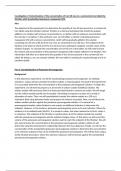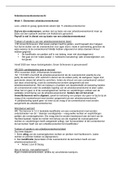Essay
applied science - unit 19 A part 2 - finding the iron content - distinction level
- Course
- Institution
this is unit 19 A part 2 . it up to distinction level . it includes : Practical 2: determine the iron content of an iron tablet. Part 1: standardisation of potassium permanganate with sodium oxalate solution. Part 2: determine the concentration of iron by titrating potassium permanganate s...
[Show more]




